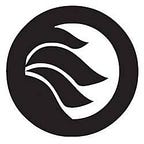From Robots To Rembrandt At World Maker Faire NYC
By Catherine Addington
This weekend, artists, engineers, designers, enthusiasts, and tinkerers of all kinds came together to celebrate innovation and education at the World Maker Faire New York 2013, hosted by Maker Media. The Maker Faire calls itself “part science fair, part county fair, and part something entirely new,” and is fundamentally a place to exchange ideas and skills of all sorts with craftsmanship at the heart of each endeavor. So what did that look like?
It looked like thousands of visitors of all ages bustling about the New York Hall of Science in Queens for two days, engaging with everything from wearable comic book crafts to learning how to cover every conceivable surface in LEDs. Various tents showcased talks and workshops, teaching children and adults alike how to build and implement Arduino microcontrollers (a basic circuit board) in one location, while making the case for improved science and technology education at another.
The Maker Movement is not just diverse in age, but in scope: for instance, across the aisle from one another were professionals from the Metropolitan Museum of Art and hobbyist Tess Elliott. Both emphasized a remix aesthetic, something valued by maker culture. The “Met Makers” had scanned several objects from the museum — including Greek sculptures and a Rembrandt self-portrait — and transformed them into digital models to be layered together into a new digital sculpture that could be produced using a 3-D printer. “The idea is to provide raw materials for new artists and engineers, as well as robotics designers,” said a Met representative.
Meanwhile, Elliott’s “Ancient Greek Proto-Steampunk Theatre” speaks for itself in terms of the value of the mashup. “I made one for a family member once,” the full-time artist remembers, “and couldn’t stop. They are just such a delight to make.” That enthusiasm for the individual creative passion is at the heart of Maker Faire, which despite its highly sponsored content — Disney endorsed this year’s event — mostly features small businesses and families as entrepreneurial and educational units.
In fact, some of the busiest stations were the most grassroots: robotics teams from local grade schools drew crowds all day long for their staged races and games allowing the public to direct student-made robots all through the Maker Faire’s outdoor premises. Similarly, DIY vendors whose work would normally be consigned to the pleasant obscurity of an Etsy shop online or a local craft market were given the spotlight, as family-made origami earrings were sold alongside postcards that turned into paper models of New York City landmarks.
Amanda McLoughlin, a CAS senior, attended both days of this year’s Maker Faire. “The Faire is family-friendly, and the kids’ activities are not limited to the under-12 attendees,” she explained. “I soldered my first circuit board and learned how to knit! Everybody was there to learn, which is my favorite kind of place to be. Where else can you geek out over robotics, microbrews and 3D printers in the same place?”
With growing enthusiasm from children, adults, techies, and artists, alike, the Maker Movement shows no signs of slowing. For a sample of the movement’s ever-expanding innovation, however, New York’s Maker Faire is unparalleled.
